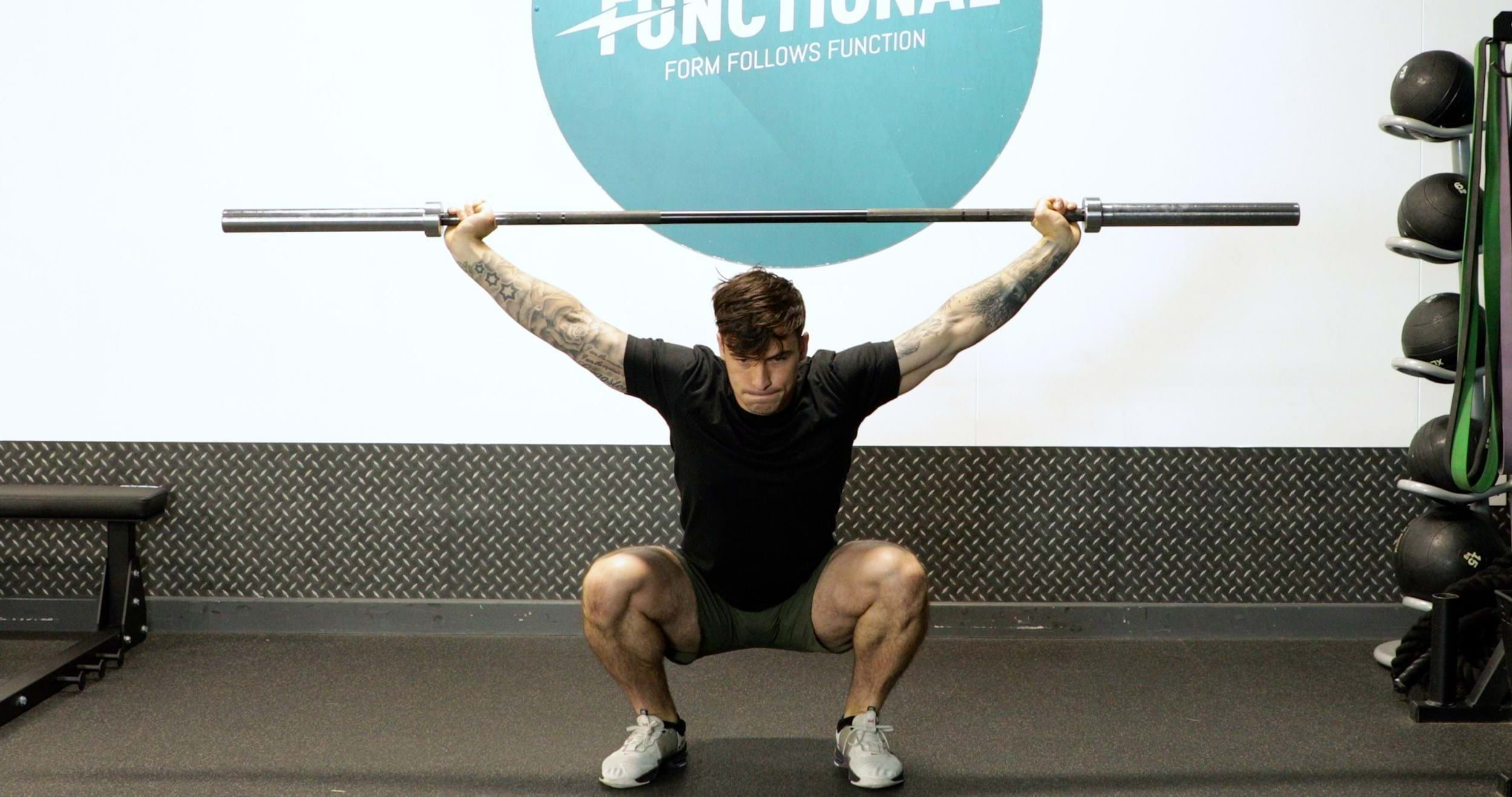Overhead Squats
What Is An Overhead Squat?

The overhead squat is a challenging, full body movement that can use varying pieces of equipment. With the arms positioned above the head, the overhead squat activates several upper body muscles that are not usually targeted during other squat movements.
This exercise is often performed with a barbell, however this is an advanced movement that can be tricky if you're new to overhead squats. Start out with other equipment like dumbbells, a sandbag, or even a medicine ball to get to grips with the movement pattern and form before progressing to a barbell.
Overhead squats work the glutes, hamstrings, quads, and calves, but also work the deltoids and triceps, and core. It will challenge your stability and coordination, and requires a great level of ankle and shoulder mobility. It's one of the more challenging squat variations and typically requires a much lighter load.
Check out some other squat variations: prisoner squats, pulse squats, tempo squats, landmine squats, zercher squats
Commonly Asked Questions On Overhead Squats
Like all squats, the overhead squat is good for building lower body strength. It also challenges the upper body and core strength by maintaining a weight overhead. Additionally, it requires and can improve mobility, coordination, stability, and balance.
The overhead squat is challenging as it requires a good level of shoulder, hip, and ankle mobility in order to reach depth while keeping the weight overhead. The torso has to remain upright which requires mobility and core strength, and there needs to be a decent level of upper body strength to keep the weight in place.
If you want to add overhead squats into your routine, start by perfecting the prisoner squat with the hands positioning behind the head. This will help you to master the upright position needed for an overhead squat. You can then bring in light dumbbells or medicine balls and begin to progress towards heavier weights.
Overhead Squat Tips
The barbell overhead squat can be a helpful progression for those looking to build their squat and is certainly ideal for those who perform Olympic movements such as squat jerks. If you’re new to squatting or you’re finding the use of the barbell challenging, try overhead squats with different equipment like dumbbells or medicine balls.
Due to the overhead placement, the performer may find their chest collapses forward as they reach squat depth. Like other squat variations, some may find it helpful to elevate their heels to gain artificial ankle mobility and aiding them to reach depth of at least parallel.
How To Do An Overhead Squat
Choose a small, lighter barbell or an alternative piece of equipment such as dumbbells that you can lift from the floor over your head or opt for an Olympic bar that is racked in a squat rack. If choosing the squat rack, set the barbell up just below your shoulders.
Lift the weight so it is in line with or just behind your head, with arms extended out. If using a barbell, take a wide grip just outside shoulder width apart.
Find your preferred squat stance and slightly externally rotate your feet so the toes point outwards.
Begin to squat down by pushing your hips back while bending at the knees. Push your knees out to prevent them caving.
Once you reach parallel or just below, drive back up to standing by pushing through the entirety of both feet. Imagine you are pushing the ground away. Stand tall but maintain a soft bend in the knees as you return to standing, and lightly squeeze your glutes.
Make sure your arms are kept extended and above the head throughout the full exercise.
If you’re not sure if any of the above exercises are suitable for you, please consult your doctor before you start it. Need guidance on how to perform the exercise? Ask a personal trainer at your gym.